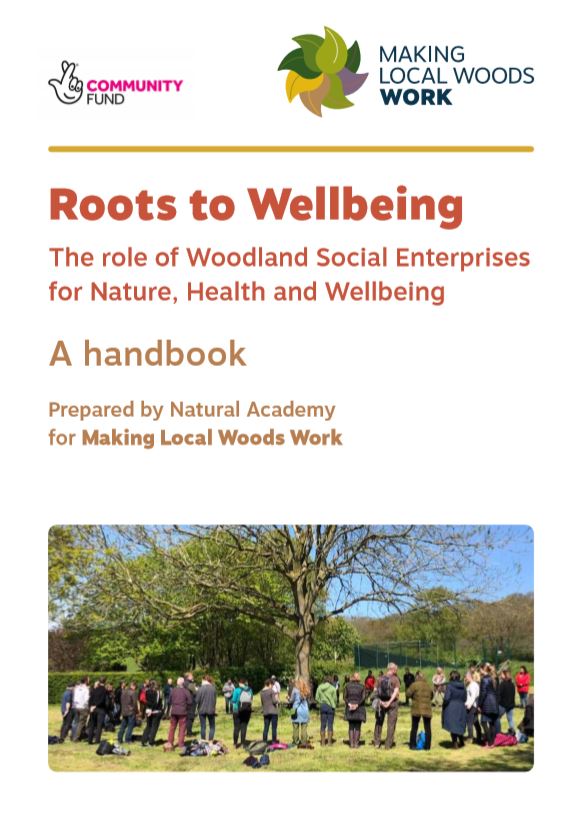
As the new hand book ‘Roots to Wellbeing The role of Woodland Social Enterprises for Nature, Health and Wellbeing’ is published, Michéal Connors of the Natural Academy, looks at the wellbeing power of trees and woodlands.
Roots to Wellbeing
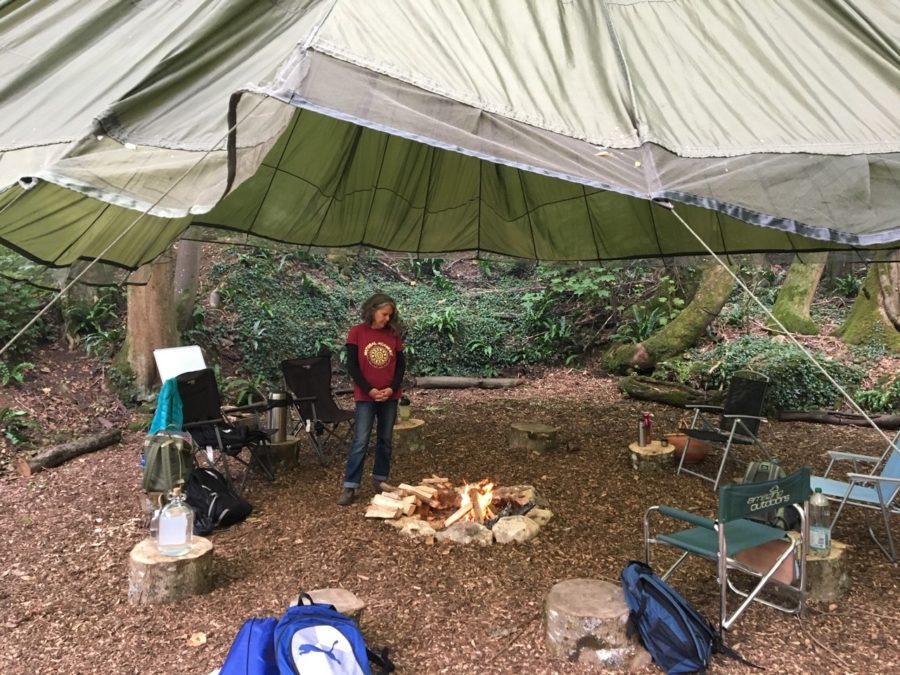
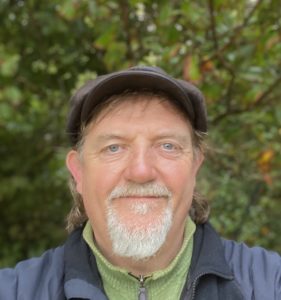 Trees and woodlands have always been a place of peacefulness, relaxation and connection for me. During the recent lockdown and within the stresses and strains of adapting to the new reality we are living, this connection has become even more vital and necessary as an integral part of my day to day life.
Trees and woodlands have always been a place of peacefulness, relaxation and connection for me. During the recent lockdown and within the stresses and strains of adapting to the new reality we are living, this connection has become even more vital and necessary as an integral part of my day to day life.
Whether that is stopping for a moment by a tree in Bristol city centre or going to the beech grove in woodlands close to where I live or even camping in forests in Wales for days on end, my life has become infused with the wonderful sights, smells and textures of these wooded places, getting to know and connect to the plants and animals that inhabit these spaces.
I always knew the multiple benefits to my physical, emotional and spiritual health that these times connecting to nature offered me and over the past 20 years. Now as a practitioner, teacher and always a student of the field of ecopsychology and nature based practice, I have also come to know many writings, teachings and methods, both ancient and modern that have developed to support our nature connection. These offer us many ways to support our health and wellbeing as well as finding creative inspiration and meaning. Alongside this I have immersed myself in the fast-developing evidence base that proves how much we and nature benefit from simple yet profound connections.
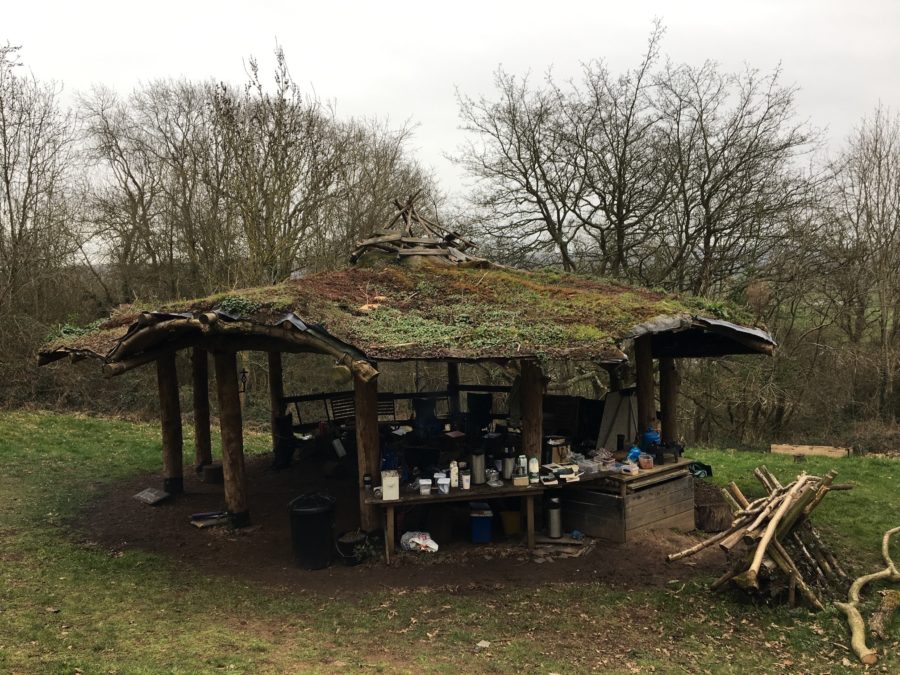
In Japan nature connection has been such an integrated part of their culture, they have a great tradition of dividing their year into 72 micro seasons, each roughly 5 day period is a season given its own particular nature connection name. In March as we went into lock down these were some of the micro seasons in Japan:
March 1-5 Sōmoku mebae izuru Grass sprouts, trees bud
March 21-25 Suzume hajimete sukū Sparrows Start to nest
March 26-30 Sakura hajimete saku First cherry blossoms
Such connectedness to the natural rhythms of the ever changing seasons is something I noticed immediately during lockdown. Every day I had time in nature as the April sun shone, I was especially connected to a small grove of beech trees just next to where I live. As the sun shone brightly in Spring I observed daily shifts in growth, tight buds, first leaf blossoming, all leaves blossoming, insects in sun rays, warm breeze rustling, evening dance of shadows… every day daily, even hourly, these normally imperceptible micro seasons emerged for me.
These simple, profound moments of connectedness have been a balm for many people in these times, with two thirds in a recent National Trust poll saying that noticing nature has made them happy and that over half intend to continue doing this.
During Lockdown we at Natural Academy wanted to offer some ways to help people find solace and support in this nature connection. We wanted people to come together to support ways that we can all deepen into the wellbeing benefits for ourselves and the natural world.
Now the micro season is the threshold of autumn, changing perhaps as climate shifts, it is for now the time of yellow edges of leaves, stars emerging, Venus shining in the sky as the sun rises. The micro seasons turn again and I know that beech tree grove is going to offer more delights as winter comes that mirror the ever changing world we live in. Whatever happens we can connect to the natural world around us, whatever happens we can find ways to care for ourselves, for our communities and those trees, plants, animals ecosystems that are also our kin.
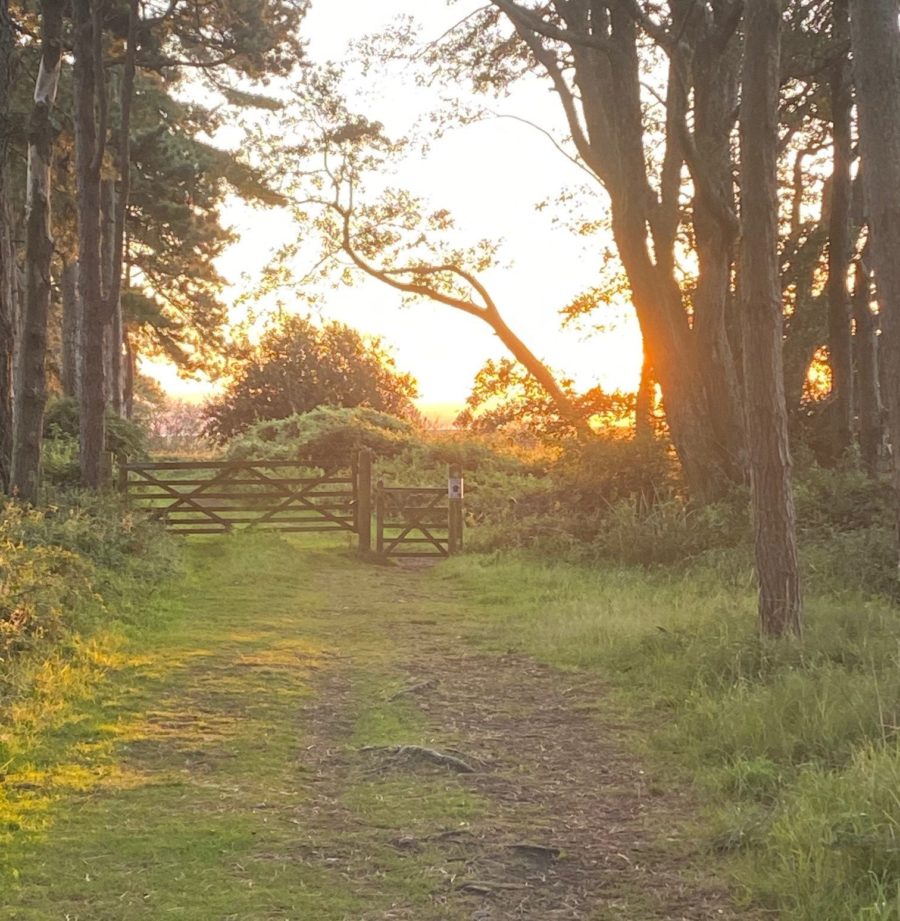
What a joy to find hundreds, even millions (maybe even hundreds of millions) of people finding solace, inspiration and joy in what the great Nature Poet Mary Oliver calls the ‘Daily presentation’ of nature. Exploring their own micro season calendar seeing the small but wondrous changes every day. We all came together on our free online nature connection Zoom webinars to explore the deepening of our connectedness to these through practices and the five pathways to nature connectedness, Contact, Beauty, Emotion, Compassion and Meaning developed and researched at the University of Derby.
These weekly webinars and other online courses became very popular and helped many people deepen their connectedness and manage the impact of the social isolation, anxiety and disconnection. It helped me too to be in that deep conversation of how we can support ourselves and come back to a deep care for nature around us, even if it is a small tree growing on a scrappy piece of disused land next to a road. Helping ourselves recover and in that process also helping nature recover is surely something we can all see the value of now even if we hadn’t seen it already.
Before starting this article I went back to that beech grove place next to me, that spot that has become a place of deep inspiration and wellness for me during an extraordinary time.
Now the micro season is the threshold of Autumn, changing perhaps as climate shifts, it is for now the time of yellow edges of leaves, stars emerging, Venus shining in the sky as the sun rises. The micro seasons turn again and I know that beech tree grove is going to offer more delights as winter comes that mirror the ever changing world we live in. Whatever happens we can connect to the natural world around us, whatever happens we can find ways to care for ourselves, for our communities and those trees, plants, animals ecosystems that are also our kin.


